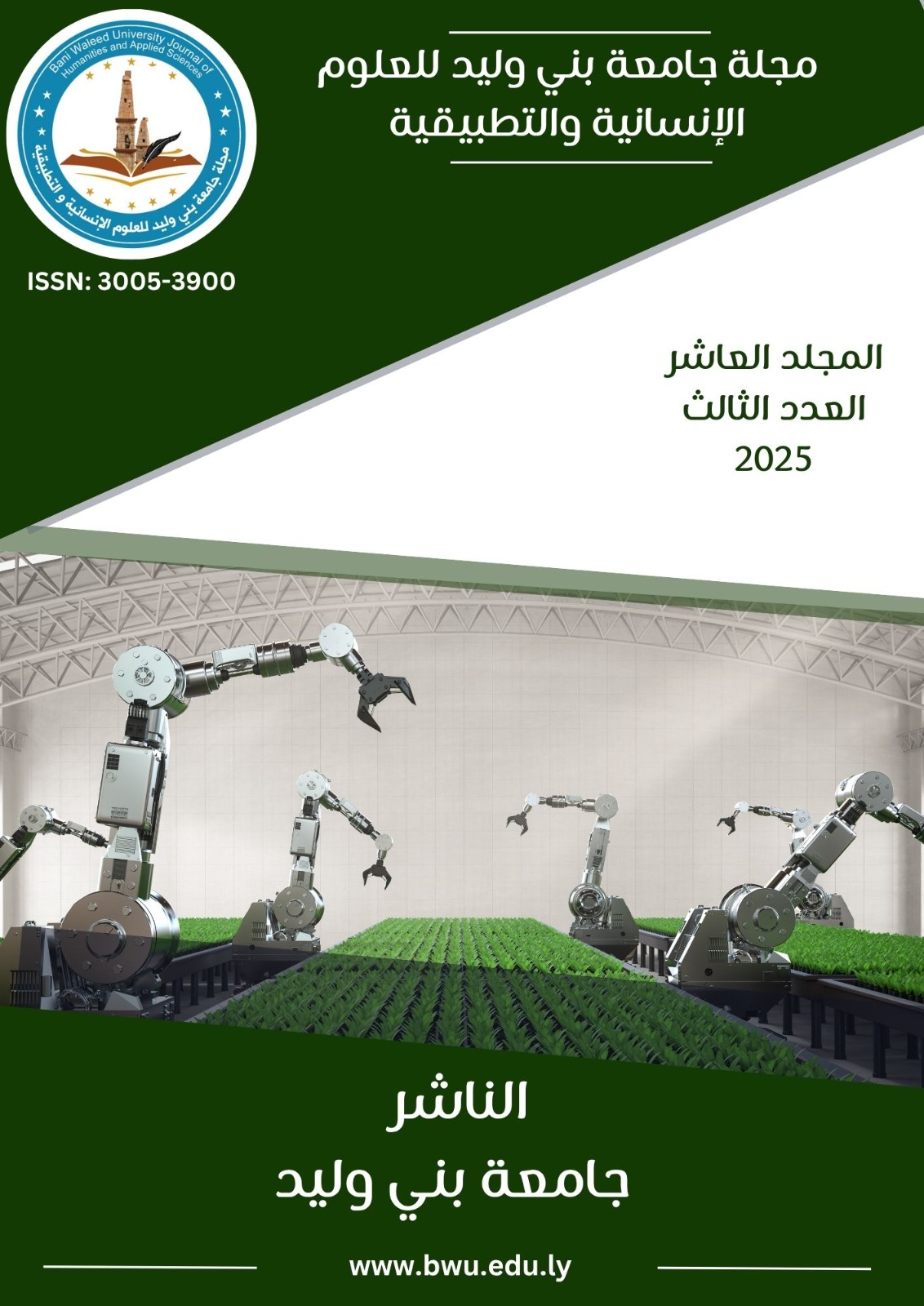Assessment of flash flood hazards on urban development in Dhurma City Using simulation modeling and geospatial technologies
DOI:
https://doi.org/10.58916/jhas.v10i3.855Keywords:
Floods, hydrograph, hydrological model, hydraulic model, urban areaAbstract
Hydrological and hydraulic modeling are among the most important methods for simulating flood risks within urban areas. This study aims to model the flood risks of Dhurma City, Riyadh Region, Saudi Arabia. This city suffers from frequent flooding due to its location at the mouth of valleys and valleys west of the Tuwaiq Mountains. The study also aims to develop a digital map of the severity and degree of flood risks in the study area and develop proposed solutions to reduce the risks of these floods. To achieve the study objectives, simulation models and geospatial techniques were combined, represented by the use of the Water Basin Modeling (WMS) program and the hydrological model (HEC-HMS) to extract the hydrograph unit and maximum flow for the study basins, and the application of the two-dimensional hydraulic model (HEC-RAS) within the urban area to determine the speed, limits, and depth of surface runoff. Finally, the study reached results including the exposure of the city of Dhurma to the risks of recurring floods due to its location at the mouths of number of valleys, namely Shuaib Al-Murir, Al-Humaid, Aba Al-Qarawa, and Wadi Al-Batin, which led to the exposure of about (5.70) km2 of the urban area to floods, i.e. (15)% of the total area of the urban area and the neighborhoods exposed to floods (Al-Maarid, Al-Deira, Al-Nahda, Al-Muntazah, Al-Yamamah, Al-Batin, and the College of Humanities). Among the results are the design and modeling of flood maps and the speed and depth of floods for the city. The study recommended the establishment of a group of facilities to ward off flood risks for the city of Dhurma.
Downloads
References
أولاً: المراجع العربية
- أطلس التربة-الخريطة العامة للتربة، (1886)، وزارة البيئة والمياه والزراعة، المملكة العربية السعودية.
- الجعيدي، فرحان حسين، بوربة، محمد، العثمان، محمد، مختار، محمد الفاتح، (2008)، درء أخطار السيول في مدينة الخرج، الرياض: جامعة الملك سعود، الرياض، معهد الملك عبد العزيز للبحوث والدراسات الاستشارية.
- شعبان، أسامة حسين، (2009)، الأخطار والكوارث البيئية القاهرة: دار الفجر للنشر والتوزيع.
- عبد الكريم، أشرف أحمد، (2019)، النمذجة الهيدرولوجية والهيدروليكية للسيول باستخدام برنامج نظام نمذجة الأحواض المائية، الرياض: فهرسة مكتبة الملك فهد الوطنية، نشر العبيكان
- الكومي، عبد الرزاق بسيوني، 2022م، النمذجة الهيدرولوجية لحوض وادي إيمو بالصحراء الشرقية باستخدام نموذج HEC-HMS، دراسة في الجيومورفولوجيا التطبيقية، مجلة كلية الآداب، جامعة الفيوم، قسم الانسانيات والعلوم الاجتماعية.
- الهيئة العامة للأرصاد والبيئة، (2016)، تقرير حالة البيئة المملكة العربية السعودية، الطبعة الثانية، الصفحات 210.
- وكالة الأنباء السعودية، (2017)، 29 مدينة سعودية عالية الخطورة في الأمطار الغزيرة.
- خريطة شمال طويق الجيولوجية(1985م)، لوحة رقم (NG-101 C)، بمقياس1:25000، وزارة البترول والثروة المعدنية، المملكة العربية السعودية
https://www.ajnet.me/news/2017/2/19/29-مدينة-سعودية-عالية-الخطورة-في-الأمطار
ثانياً: المراجع الأجنبية
- Chow, T, Maidment, D, Mays, L (1988), Applied Hydrology, McGraw Hill, International Edition, pp, 1-294.
https://wecivilengineers.wordpress.com/wp-content/uploads/2017/10/applied-hydrology-ven-te-chow.pdf
- Fan, C, Ko, H, Wang, S, (2009) An innovative modeling approach using Qual2K and HEC-RAS integration to assess the impact of the tidal effect on River Water quality simulation, J, Environ, Manga, 90, 1824–1832-79, Anderson.
An_innovative_modeling_approach_using_Qu (2).pdf
- Hatim O, Sharif, Farhan H, Al-Juaidi, Abdulaziz Al-Othman, Ibrahim Aldous Ary, Eyad Fadda, Salem Jamal-Uddeen & Almoutaz Elhassan, (2016), Flood hazards in an urbanizing watershed in Riyadh, Saudi Arabia, Geomatics, Natural Hazards and Risk, Vol, 7, No, 2, 702720.
- https://www.tandfonline.com/doi/epdf/10.1080/19475705.2014.945101?needAccess=true
- Ponce, V, M, Hawkins, R, H, (1996) Runoff Curve Number: Has It Reached Maturity, Journal of Hydrologic Engineering, Vol, 1, 1084-0699(1996), pp, 9-20.
https://ponce.sdsu.edu/runoff_curve_number_has_it_reached_maturity.html
- Sonia, Ijaz, Qudsia Hameed, Aiza Ahsan, Muhammad Atif Butt, (2019) Flood Frequency Analysis of Chenab River for Predicting Peak Flows during Late Monsoon Period, Centre.
https://www.scirp.org/pdf/ars_2019030815332048.pdf
- UNISDR (United Nations International Strategy for Disaster Reduction) (2004): Living with Risk A Global Review of Disaster Reduction Initiatives, Geneva: UN.
https://www.unisdr.org/files/657_lwr1.pdf
- Soulis, K.X. and Valiantzas, J.D. (2012): SCS-CN Parameter Determination Using Rainfall-Runoff Data in Heterogeneous Watersheds: The Two-CN System Approach. Hydrology and Earth System Sciences, 16, 1001-1015.
file:///C:/Users/hp/Downloads/9-hess-16-1001-2012.pdf
- Muhammad Al-Zahrani, Ahmed Al-Areeq and Hatim Sharif, (2016), Flood analysis using HEC-RAS model: a case study for Hafr Al-Batin, Saudi Arabia, European Conference on Flood Risk Management, published by EDP Sciences, Reduction Service in Big Dara Era, 8th International Conference on Cartography and GIS, Nessebar, Bulgaria Vol, 1, 557- 564.
file:///C:/Users/hp/Downloads/Flood_analysis_using_HEC-RAS_model_a_case_study_fo.pdf
- U. S Department of transportation, Federal Highway Association, (2002), Highway.
https://www.fhwa.dot.gov/policy/ohim/hs02/
- Mohamed Abdulrazzak, Amro Elfeki, Ahmed Kamis, Moustafa Kassab, Nassir Alamri, Anis Chaabani & Kashif Noor, (2019), Flash flood risk assessment in urban arid environment: case study of Taibah and Islamic universities’ campuses, Medina, Kingdom of Saudi Arabia, GEOMATICS, NATURAL HAZARDS AND RISK.
file:///C:/Users/hp/Downloads/Flash_flood_risk_assessment_in_urban_arid_environm.pdf
- Ashraf Abdelkarim, Ahmed F, D, Gaber, Ahmed M, Youssef, Biswajeet Pradhan, (2019), Flood Hazard Assessment of the Urban Area of Tabuk City, Kingdom of Saudi Arabia by Integrating Spatial-Based Hydrologic and Hydrodynamic Modeling, Sensors 2019, 19, 1024 Basel, Switzerland.
file:///C:/Users/hp/Downloads/Flood_Hazard_Assessment_of_the_Urban_Area_of_Tabuk.pdf













